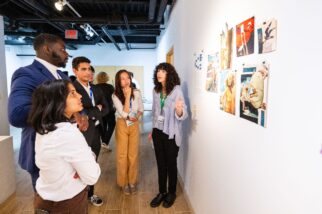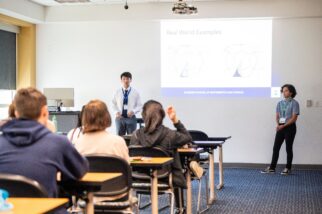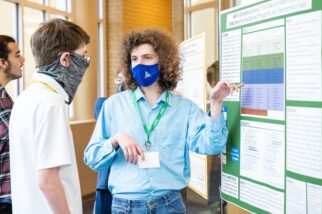ASMS Hosts Inaugural Research Forum and What I Learned
By ASMS senior, Ruth Delmas - Mobile County, AL
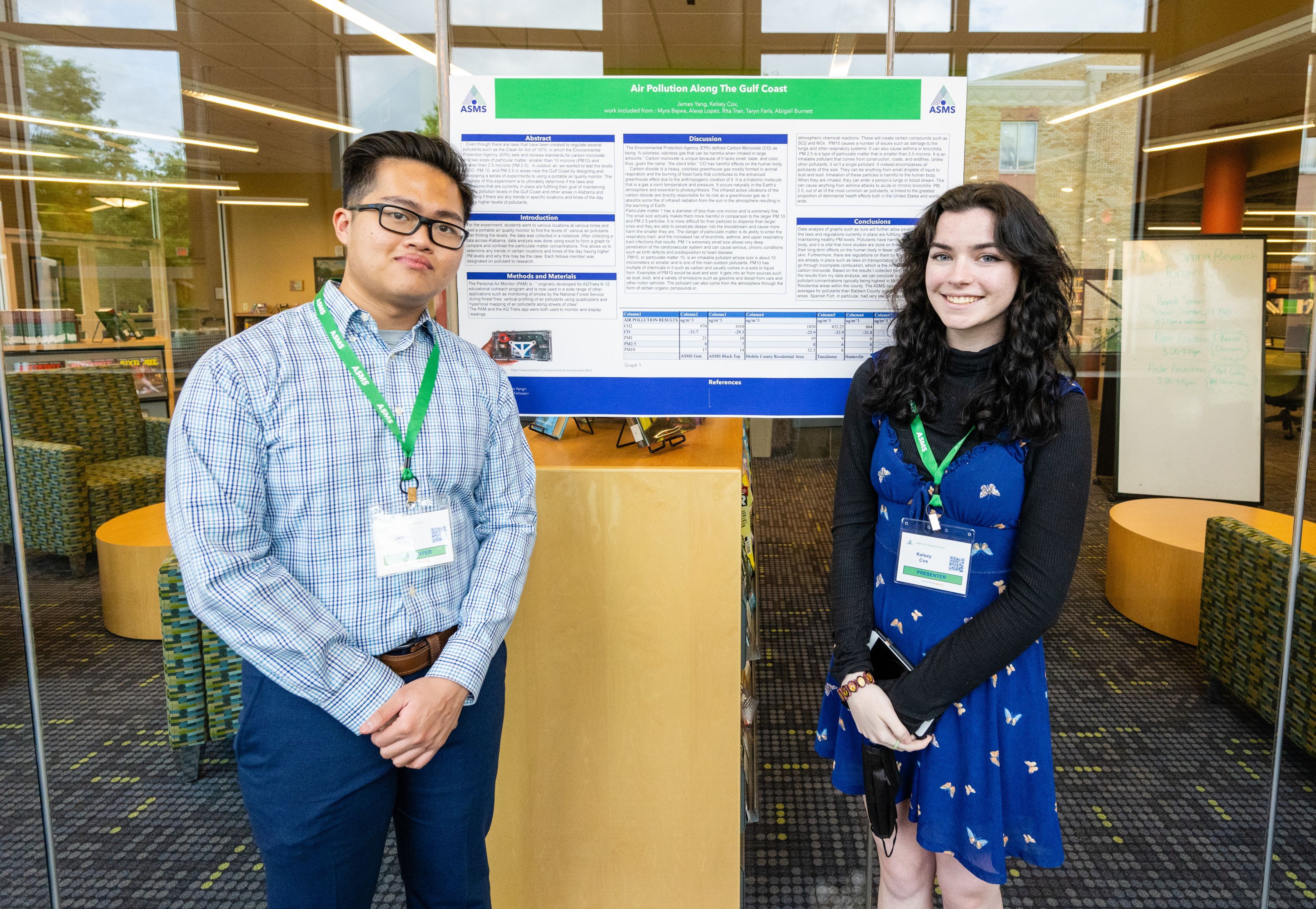
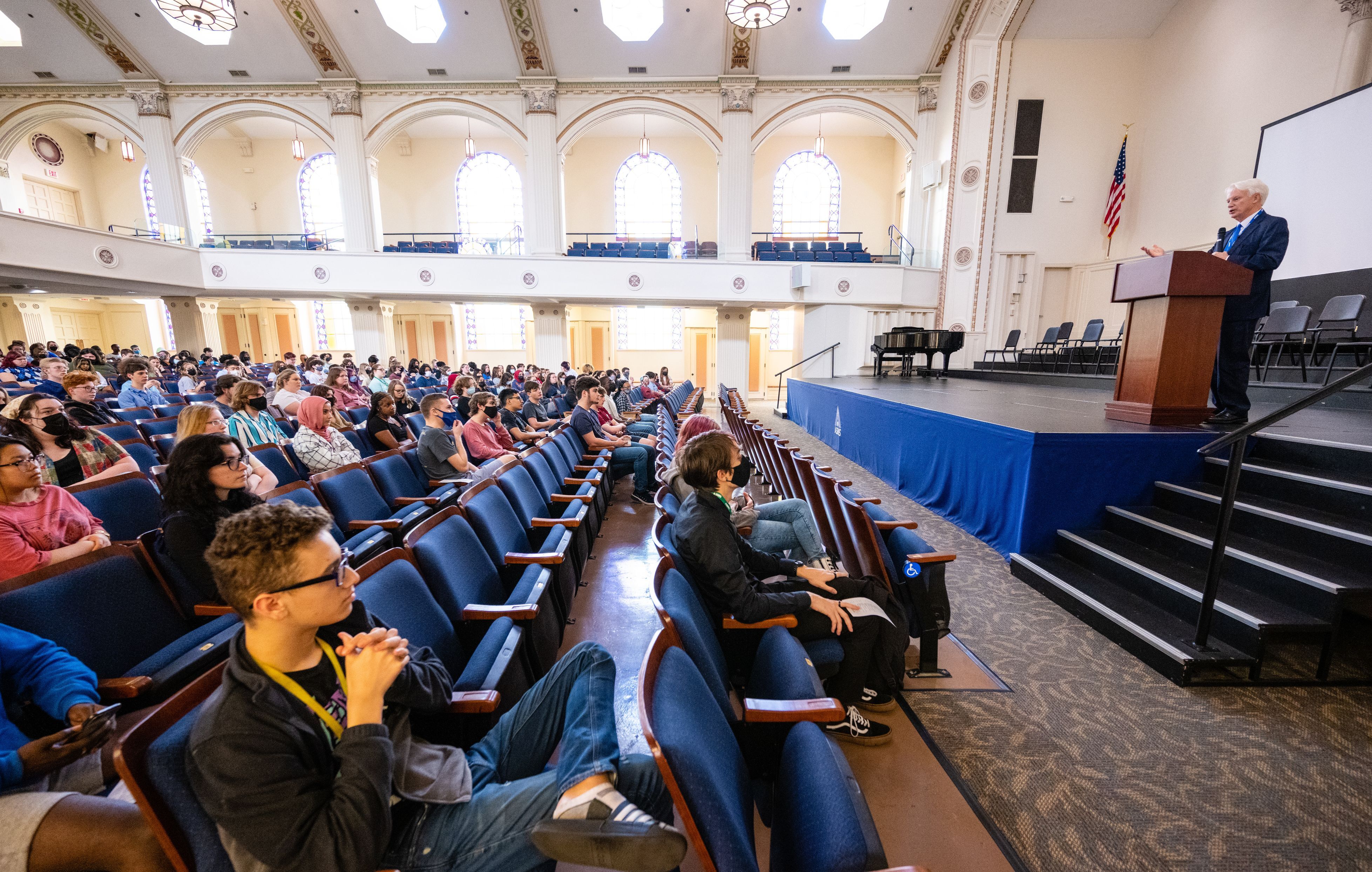
On April 29th, the Alabama School of Math and Science hosted its anticipated Spring Research Forum for its Research Fellows Program. This event was a culmination of a year’s hard work and exploration from our students and their faculty mentors. South Alabama’s Vice President of Research, Dr. Michael Chambers, addressed the entire student body as the keynote speaker for the symposium with an insightful speech about our world’s explosion of innovation and prompted us to ask how we can enhance these or conceive our own.
Research presented at this symposium began at the beginning of the year with students who elected to become part of the Research Fellows Program. This program is interdisciplinary, and project topics ranged from organ transplant alternatives to Puerto Rican poets. Some mentors outlined their projects at the beginning of the year and accepted students that were interested; other projects were thought of by students themselves who then reached out to faculty who could guide their work.
Here are some projects I visited to hear from ASMS students and what I learned:
The first project I visited was Marina Roddy’s “Differing Portrayals of Femininity in ‘The Great Gatsby.’” This was a “paper presentation” in which students spoke to an audience at a designated time, much like a conference speaker, presented their research with visual aids and took questions at the end. Marina looked chiefly at Jordan Baker, a strong-willed female character, and Daisy Buchanan as her foil. As written in her abstract, F. Scott Fitzgerald was a writer with an unconventional approach to the gender roles of his characters. Jordan Baker is a new kind of woman of the 1920s. She’s a driven, competitive golfer and is said to be the moral opposite to Daisy, who Marina believes is an unreliable, uber-feminine character. It is their differences that expose Daisy, the love interest of Gatsby, as a character who is “dangerous and corrupt.” Marina concluded with explaining that Jordan’s character is intentional and multifaceted, which was a rare portrayal of women at the time. A member of the audience asked our researcher why she thought Fitzgerald wrote this progressive depiction of a woman. Marina responded that Fitzgerald’s respect for his daughter and woman intellectuals he associated with could have inspired Jordan Baker’s character. Marina’s mentor was Dr. Mitch Frye, ASMS Academic Dean who also researches 20th century American literature.
Other presenters, like Liz Womble, displayed their findings on posters outside our library and had a more transient audience, allowing people to study their posters and ask questions to the researcher attending it. Liz’s project is titled, “AMP: A Comparative Analysis of Two Eukaryotic Motor Proteins’ Evolutionary Histories Obtained Through the Use of Bioinformatics Tools.” She looked at two motor proteins, myosins and kinesins, found in all eukaryotes, and asked, “How did these proteins evolve?” Twenty species’ genomes were sequences to find commonalities between the proteins using NCBI’s (National Center for Biotechnology Information) program, MEGA-X. She used the results of the sequences to create a cladogram for both myosin and kinesin. Cladograms are diagrams that show the possible evolutionary relationships between different organisms. In these cladograms, humans were closely linked with brown algae for kinesin and parasitic amoebas for myosin. Liz’s results stated, “The two cladograms show very different distributions of taxa.” Her research concluded that the two motor proteins evolved independently from one another and that the last common eukaryotic ancestor (LCEA) “possessed both types of motor protein.” Liz’s mentor was Dr. Natalie Ortell, a member of our biology department and microbiologist.
Sofia Laugelli, a member of a semiotics research group, produced art and written analysis for her project titled, “The Visual Semiotics of Birds.” Semiotics is the study of signs and symbols, visual depictions and what they represent. Sofia’s abstract states that in her process of creating her own pieces, she “experiment(s) with the relationship between the icons, indexes, and symbols of birds.” Her medium of choice is collage, playing with color, pattern, and text to convey the universal significance of her subject: birds! In each work, she tried to elicit an emotion or idea through the use of birds as a symbol in surrealist imagery. She worked with Mr. Orren Kickliter of the ASMS Arts Department.
I also spoke with James Weaver and Patrick Decker, both seniors who studied a developing form of clean energy. Their project titled, “The MIM Diode, Energy from Passive Cooling,” claims that their subject could parallel or be even more useful than photovoltaic cells used in solar panels. This technology is called a “MIM Diode” or metal-insulator-metal diode which “produces an electric current when exposed to heat,” through a process called quantum tunneling. Their project aimed to utilize this technology for efficient, passive cooling to be used in “homes in both first and third world countries,” according to their abstract. They proposed an aerogel-like structure in which air passes through a porous insulator which would absorb and convert any heat in the air that passes through it. This technology could address several problems: fossil fuel consumption, developing infrastructure, and accommodations in space. Patrick and James suggest that the potential of the MIM diode is very promising, it can produce electricity anywhere heat is present. They suggested this device an addition to solar panels on spacecrafts or houses to utilize heat that otherwise goes to waste. Patrick and James worked with their mentor, Dr. Elisa Rambo, an organic chemist, and long-time ASMS faculty member, to produce this research.
The ASMS community offers a thank you to Spire for its generous grant which helped make the forum possible! Congratulations to our researchers and their mentors for a successful and sophisticated presentation. This program is central to our school’s values, fostering an appreciation of research and providing students with the readiness to conduct it throughout their academic and professional careers!

